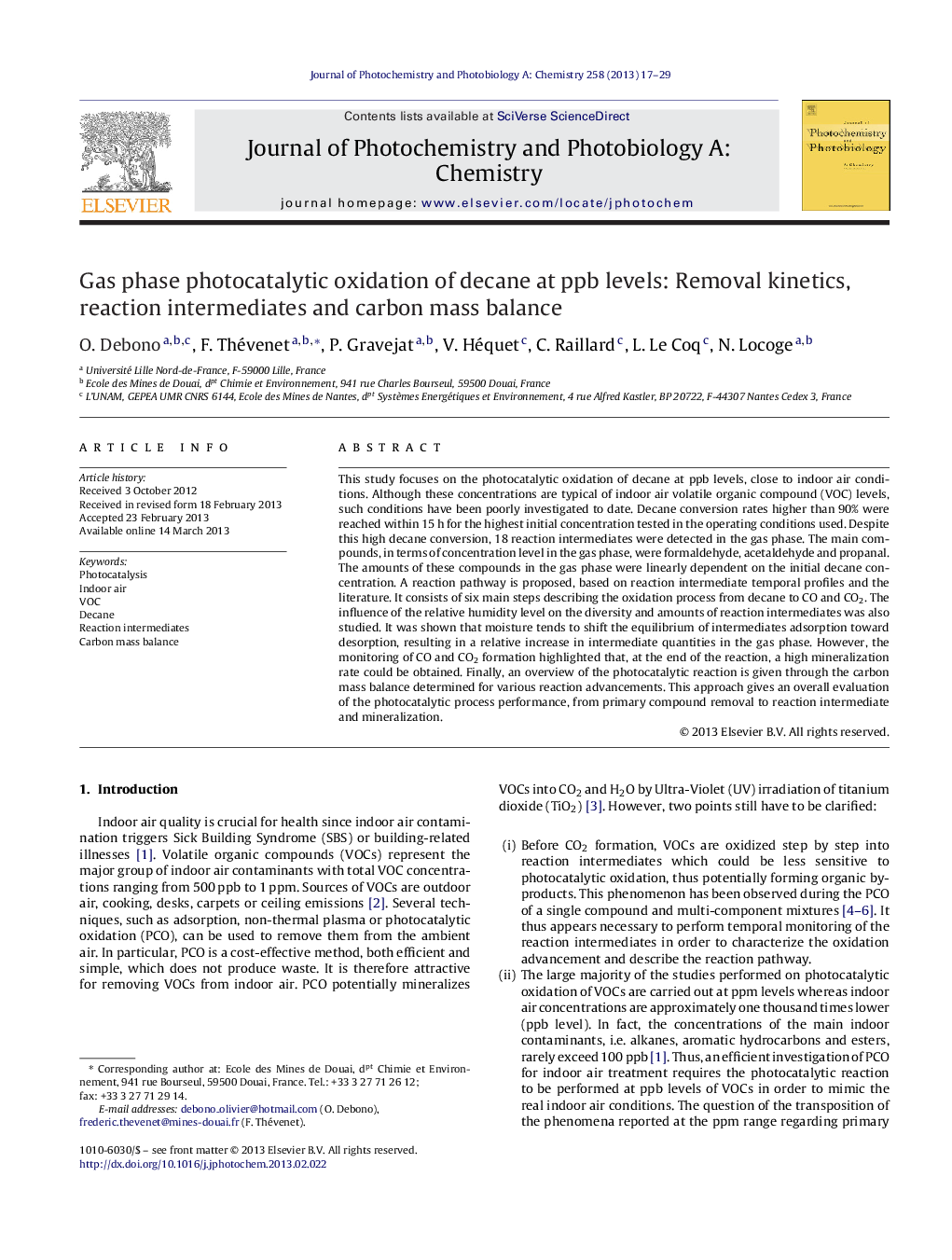| Article ID | Journal | Published Year | Pages | File Type |
|---|---|---|---|---|
| 27688 | Journal of Photochemistry and Photobiology A: Chemistry | 2013 | 13 Pages |
•Decane batch photocatalytic abatement on the ppb range.•Simultaneous monitoring: (i) decane, (ii) reaction intermediate, and (iii) CO and CO2.•Reaction pathway of decane oxidation.•Light aldehydes firstly the main gaseous intermediates, then mineralized into CO2.•Intermediates and CO2 formations are maximized by 50% RH.
This study focuses on the photocatalytic oxidation of decane at ppb levels, close to indoor air conditions. Although these concentrations are typical of indoor air volatile organic compound (VOC) levels, such conditions have been poorly investigated to date. Decane conversion rates higher than 90% were reached within 15 h for the highest initial concentration tested in the operating conditions used. Despite this high decane conversion, 18 reaction intermediates were detected in the gas phase. The main compounds, in terms of concentration level in the gas phase, were formaldehyde, acetaldehyde and propanal. The amounts of these compounds in the gas phase were linearly dependent on the initial decane concentration. A reaction pathway is proposed, based on reaction intermediate temporal profiles and the literature. It consists of six main steps describing the oxidation process from decane to CO and CO2. The influence of the relative humidity level on the diversity and amounts of reaction intermediates was also studied. It was shown that moisture tends to shift the equilibrium of intermediates adsorption toward desorption, resulting in a relative increase in intermediate quantities in the gas phase. However, the monitoring of CO and CO2 formation highlighted that, at the end of the reaction, a high mineralization rate could be obtained. Finally, an overview of the photocatalytic reaction is given through the carbon mass balance determined for various reaction advancements. This approach gives an overall evaluation of the photocatalytic process performance, from primary compound removal to reaction intermediate and mineralization.
